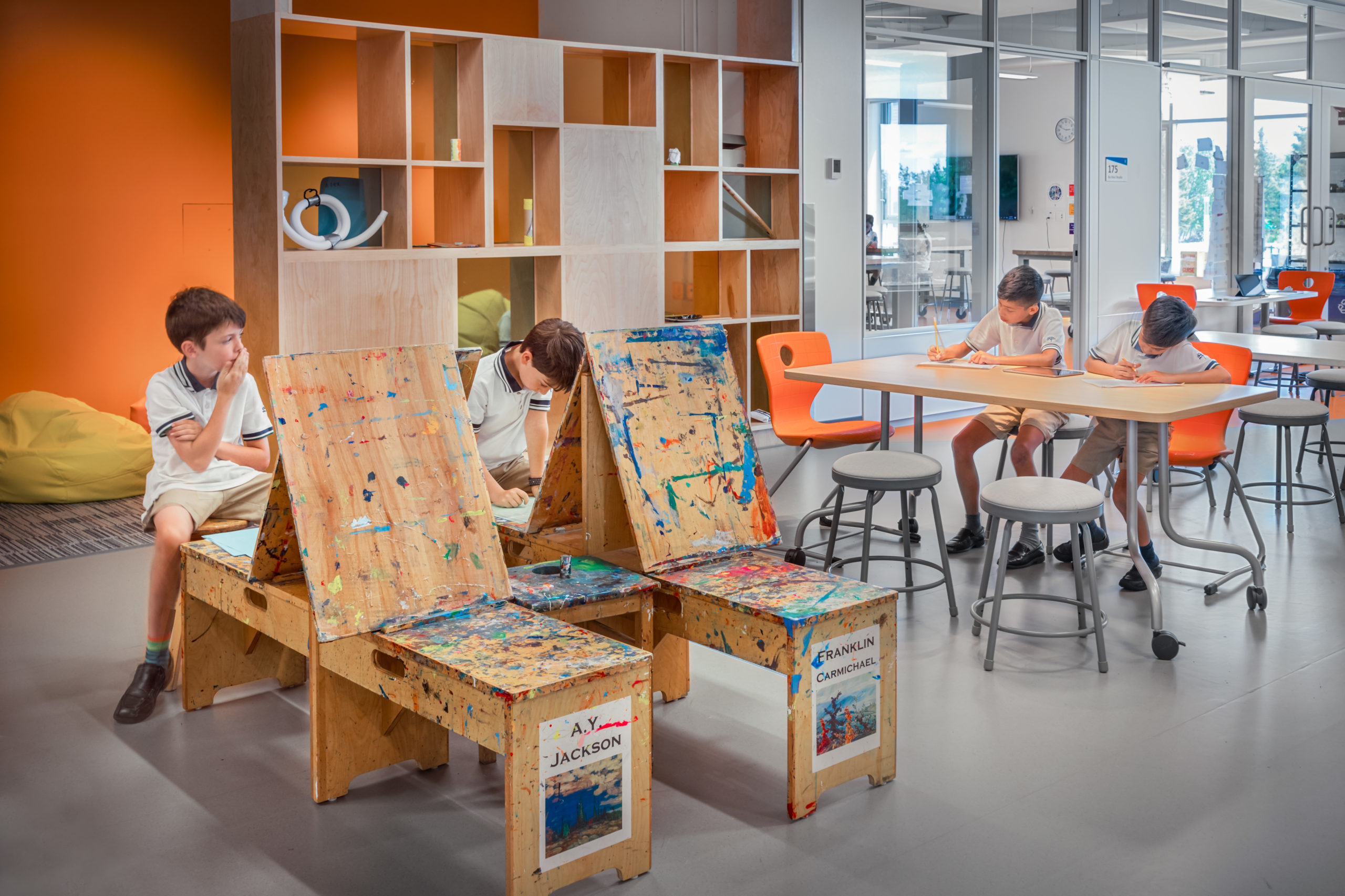
STEAM Learning Community
STEAM Learning Community
Problem
Over the last century, most secondary and post-secondary institutions have organized their facilities into content-area departments. While there are benefits of clustering in this way, it can easily contribute to an ethos of siloed learning. Today, an increasing number of schools see the value in creating interdisciplinary Learning Communities. STEM (Science, Technology, Engineering, and Math), as well as STEAM (STEM + Arts) regularly emerges as a way to organize.
Solution
A STEAM Learning Community maintains the diversity, agility, and transparency of spaces as a regular Learning Community, but it brings certain elements specific to the field. The STEAM Commons acts as an R&D Think Tank; there is more space for student display; there is a design lab meant for ideating and sketching; there are spaces for testing and experimentation; there is increased storage for the additional science and art materials.
Related Patterns Learning Community, Student Display Space, Da Vinci Studio
View Image Gallery







Learn More
- What is STEAM Education?
This piece from XQ defines what STEAM education is.
- STEM to STEAM: Art in K-12 Is Key to Building a Strong Economy
This Edutopia article makes an economic case for STEAM education.
- How a STEAM-Integrated Environment is the Classroom Makeover You Really Need
This Getting Smart article is a great resource for educators looking to get going on STEAM education.


